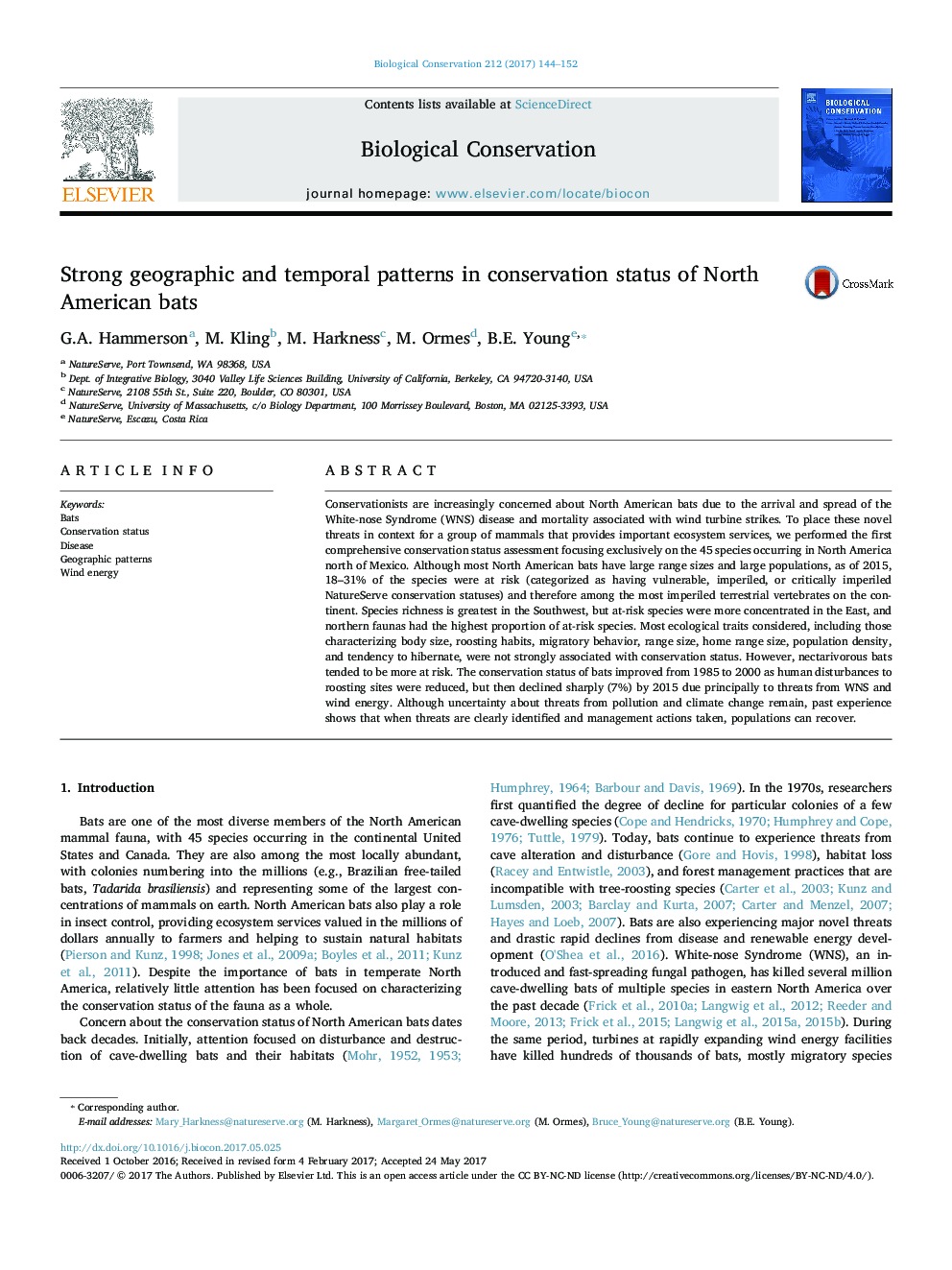| کد مقاله | کد نشریه | سال انتشار | مقاله انگلیسی | نسخه تمام متن |
|---|---|---|---|---|
| 5743098 | 1412296 | 2017 | 9 صفحه PDF | دانلود رایگان |
عنوان انگلیسی مقاله ISI
Strong geographic and temporal patterns in conservation status of North American bats
ترجمه فارسی عنوان
الگوهای جغرافیایی و زمانی قوی در وضعیت حفاظت از خفاش های آمریکای شمالی
دانلود مقاله + سفارش ترجمه
دانلود مقاله ISI انگلیسی
رایگان برای ایرانیان
کلمات کلیدی
خفاش ها، وضعیت حفاظت، مرض، الگوهای جغرافیایی، انرژی باد،
موضوعات مرتبط
علوم زیستی و بیوفناوری
علوم کشاورزی و بیولوژیک
بوم شناسی، تکامل، رفتار و سامانه شناسی
چکیده انگلیسی
Conservationists are increasingly concerned about North American bats due to the arrival and spread of the White-nose Syndrome (WNS) disease and mortality associated with wind turbine strikes. To place these novel threats in context for a group of mammals that provides important ecosystem services, we performed the first comprehensive conservation status assessment focusing exclusively on the 45 species occurring in North America north of Mexico. Although most North American bats have large range sizes and large populations, as of 2015, 18-31% of the species were at risk (categorized as having vulnerable, imperiled, or critically imperiled NatureServe conservation statuses) and therefore among the most imperiled terrestrial vertebrates on the continent. Species richness is greatest in the Southwest, but at-risk species were more concentrated in the East, and northern faunas had the highest proportion of at-risk species. Most ecological traits considered, including those characterizing body size, roosting habits, migratory behavior, range size, home range size, population density, and tendency to hibernate, were not strongly associated with conservation status. However, nectarivorous bats tended to be more at risk. The conservation status of bats improved from 1985 to 2000 as human disturbances to roosting sites were reduced, but then declined sharply (7%) by 2015 due principally to threats from WNS and wind energy. Although uncertainty about threats from pollution and climate change remain, past experience shows that when threats are clearly identified and management actions taken, populations can recover.
ناشر
Database: Elsevier - ScienceDirect (ساینس دایرکت)
Journal: Biological Conservation - Volume 212, Part A, August 2017, Pages 144-152
Journal: Biological Conservation - Volume 212, Part A, August 2017, Pages 144-152
نویسندگان
G.A. Hammerson, M. Kling, M. Harkness, M. Ormes, B.E. Young,
